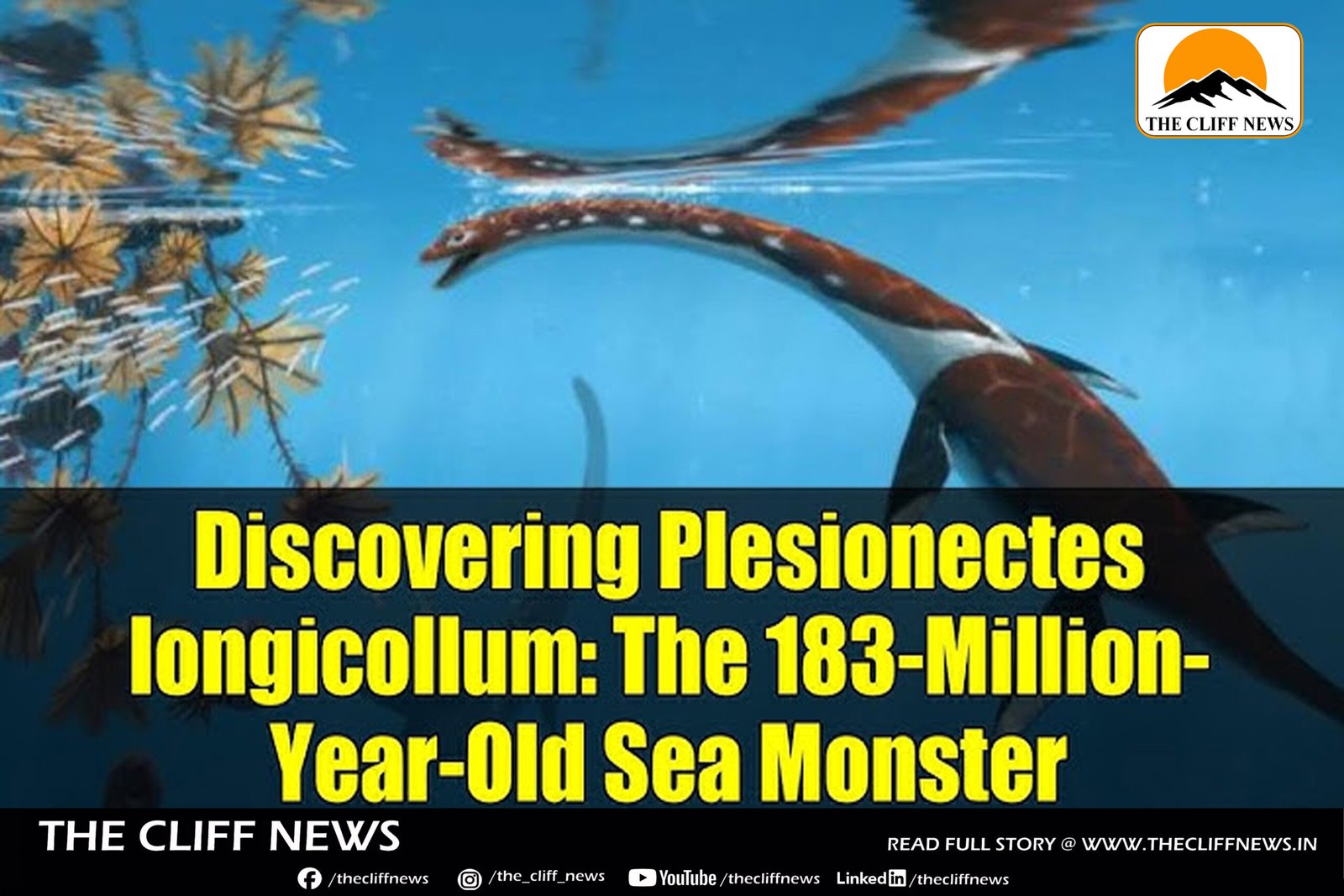Paleontologists have identified a new species of ancient marine reptile, Plesionectes longicollum, from the famous Posidonia Shale fossil beds in Holzmaden, Southwest Germany, providing valuable insight into Jurassic ocean ecosystems from nearly 183 million years ago.
🦕 Meet Plesionectes longicollum
- Name Meaning: “Long-necked near-swimmer”
- Group: Plesiosauroids – long-necked marine reptiles that lived during the Jurassic period
- Age: Early Toarcian (Early Jurassic)
- Significance:
- The oldest known plesiosaur from Holzmaden
- Features a distinct combination of skeletal traits not seen in any other plesiosaurs
- Preserves fossilised soft tissue – a rare find
📍 Discovery Highlights
- Specimen ID: SMNS 51945
- Location: Excavated in 1978 from a quarry in Holzmaden
- Museum: Now housed at the Staatliches Museum für Naturkunde Stuttgart
- Condition: Nearly complete skeleton, though the individual was not fully mature
🔍 What Makes It Unique?
Lead author Sven Sachs (Naturkunde-Museum Bielefeld) and co-author Dr. Daniel Madzia (Polish Academy of Sciences) emphasized that while the fossil had been known for decades, its distinctive anatomy was only recently studied in full.
“This specimen has been in collections for decades, but previous studies never fully explored its distinctive anatomy,” – Sven Sachs
Despite being immature at the time of death, the reptile’s unique skeletal features justified declaring it a new genus and species.
🌊 Ecological Importance
- Lived during a period of major global change, including the Toarcian Oceanic Anoxic Event, which caused widespread marine die-offs.
- The find helps scientists better understand how marine ecosystems evolved in response to such global events.
“This discovery adds another piece to the puzzle of marine ecosystem evolution during a critical time in Earth’s history,” – Dr. Daniel Madzia
🧬 The Posidonia Shale: A Jurassic Treasure Trove
- World-famous for exceptionally preserved fossils
- Has already yielded five plesiosaur species representing all three major plesiosaur lineages
- The discovery of Plesionectes longicollum cements its status as one of the most important fossil sites for studying early marine life
🧩 Why It Matters
- Adds to our understanding of Jurassic biodiversity
- Provides a clearer picture of how life adapted during times of rapid environmental stress
- A rare case where soft tissue is preserved, giving scientists more than just bones to study
📚 A fascinating glimpse into life beneath the waves during the age of dinosaurs, Plesionectes longicollum is more than just a new species—it’s a key to unlocking ancient marine mysteries.



